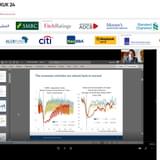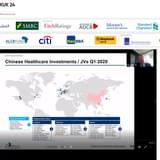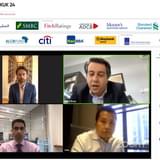The Chinese economy has shown some signs of improvement this Summer. Despite slightly weaker PMI numbers, June PPI decreased 2.6% compared to a drop of 2.8% in May, and CPI rose 1.9% from the same month a year earlier, according to new data released by the National Bureau of Statistics of China.
The new data continue to paint a picture of a modest slowdown in some ways, a slight rebound in others. China reports June trade Wednesday, with exports expected to drop 5.0% year-on-year and imports to drop 6.2% year-on-year. June IP and retail sales will be reported Friday, with the former expected to rise 5.9% year-on-year and the latter to rise 9.9% year-on-year.
The government also plans to report second quarter GDP this week, with growth expected at 6.6% year-on-year compared with 6.7% in Q1, according to data collected by Brown Brother Harriman, a New York-based investment house.
China’s economy is performing better than most expected this year as the country continues to make headway in liberalising its markets. It recently announced plans to allow Chinese onshore banks to trade in offshore markets, and signalled it would allow more domestic investors to invest in listed companies outside China, moves that could help open the country’s capital markets and boost the strength of its currency.
But some analysts urge caution around the long-term potential for a Chinese recovery. In a recent research note Cem Karacadag, Managing Director, EM Sovereign & Local Debt and Kristine Li, Managing Director, EM Corporate Debt at Babson Capital, an investment management firm, said there are signs the current rebound in China may not be sustainable.
Karacadag & Li pointed out that the current rebound seems driven largely by infrastructure and property investment. The government has ramped up spending on state owned enterprises (SOEs) but investment in private sector companies continues to fall. The growth rate of SOE investment accelerated to 23% year-on-year in May 2016, while growth in private sector investment hovered at just over 2%, raising questions over the sustainability of organic investment growth.
“While the government has pursued a rather accommodative monetary policy, banks have stayed risk-averse, preferring to make collateralized mortgages or lend to the government rather than businesses which are perceived to be too risky,” Karacadag & Li explained.
“About one-third of all new bank credit in the first five months of 2016 went to mortgages, while the majority of corporate loans are believed to have been channelled to government sponsored projects, the explained.”
The Chinese government has made commitments to reform lagging SOEs, which are on average far less profitable than their private sector counterparts, including plans to restructure more inefficient SOEs, introduce Private-Public Partnerships, and allow debt-equity swaps. But Karacadag & Li said SOE reform is lagging because the political cost of implementing some much-needed reforms – i.e. shutting some SOEs down – is too high.
“Moreover, letting loss-making companies fail would require the banking sector to deal with the bad debts accumulated over the past decade,” they said, adding that this would require a significant capital injection by the government and a change in the banks’ current business model.
The analysts also echoed concerns about the country’s growing bad debt pile, which according to the IMF could reach as much as US$1.3tn.
Jan Dehn, Head of Research at Ashmore IM said concerns about the Chinese economy and failure to implement structural reforms are somewhat overblown, pointing to some of the government’s successful initiatives in recent years including price liberalisation, interest rate liberalisation, restructuring local government debt into tradeable bonds, easing access to mainland equities and fixed income assets for institutional investors, and making progress towards joining benchmark indices for both fixed income and equities.
“Their main mechanism for supporting the economy while implementing these reforms is fiscal easing at the government level and monetary easing from the central bank. They are not reverting to non-transparent credit expansion as local government level as they did in the past,” he said.
“China is in transition from state controlled to more of a market economy. This transition will be slow. If you remove state support overnight, the costs are too large… a steady approach is far more sensible.”









